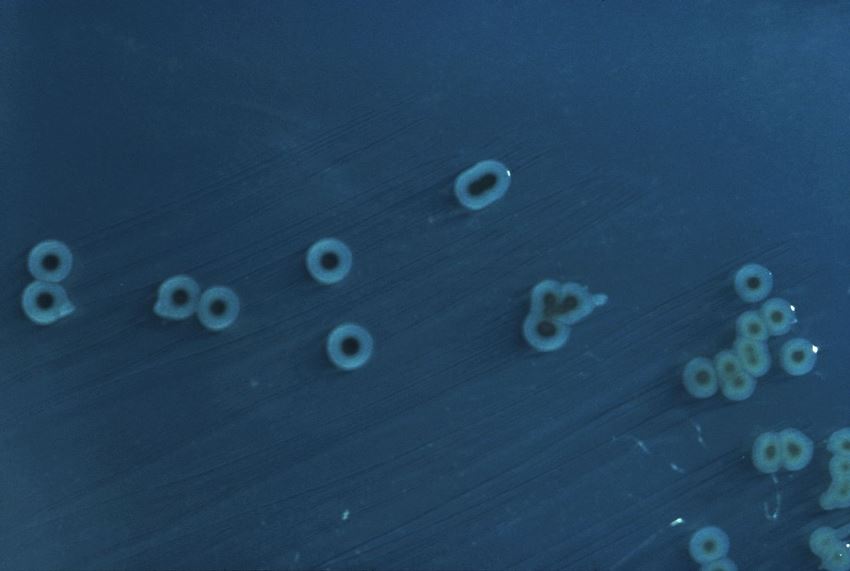
Researchers have developed a highly sensitive, cost-effective technology for rapid bacterial pathogen screening of air, soil, water, and agricultural produce in as little as twenty-four hours. “Rapid and reliable pathogen detection in field samples is critical for public health, security and environmental monitoring. Current methods used in food, water or clinical applications rely on labor and time-intensive culturing techniques while activities such as dairy farming, wastewater and runoff treatment necessitates real-time monitoring of pathogens in environment samples,” said one of the researchers.
Researchers at Ben-Gurion University of the Negev (BGU) and the Massachusetts Institute of Technology (MIT) have developed a highly sensitive, cost-effective technology for rapid bacterial pathogen screening of air, soil, water, and agricultural produce in as little as twenty-four hours.
According to Ezra Orlofsky, Ph.D., who led the research while working on his doctorate at the BGU Zuckerberg Institute for Water Research, “Rapid and reliable pathogen detection in field samples is critical for public health, security and environmental monitoring. Current methods used in food, water or clinical applications rely on labor and time-intensive culturing techniques while activities such as dairy farming, wastewater and runoff treatment necessitates real-time monitoring of pathogens in environment samples.”
The study, published online in Water, Air & Soil Pollution, defines an accurate, inexpensive, high-throughput, and rapid alternative for screening of pathogens from various environmental samples. “This isthefirststudytocomprehensivelyassess pathogen concentrations in such a broad variety of environmental sample types while achieving multiple pathogen detection with complete parallel testing by standard (or traditional) methods,” Orlofsky explains.
“We accurately identified Salmonella (S. enterica) in environmental soil samples within twenty-four hours, while traditional methods take four to five days and require sorting,” Orlofsky says. “We also successfully identified a sometimes-fatal infection, Pseudomonas aeruginosa, in aerosols generated by a domestic wastewater treatment system. The results suggest that the developed method presents a broad approach for the rapid, efficient and reliable detection of relatively low densities of pathogenic organisms in challenging environmental samples.”
To evaluate the technology, a variety of environmental samples, including aerosols, various soil types, wastewater and vegetable surface (tomato), was concurrently spiked with Salmonella enterica or Pseudomonas aeruginosa. The researchers chose these pathogens because theyareleadingcausesofillness,have highsurvivalpotentialintheenvironmentandareconsidereddifficulttodetectaccurately at low concentration.
“When applied to non-spiked field samples, our method outperformed the standard methods substantially, while detecting pathogens within a day of receiving the samples,” says Orlofsky. “Since this focused and economical screening procedure tells us exactly where to look within a day, we don’t need to monitor hundreds of samples and sub-samples over several days.”
The two techniques used concomitantly are an evolved “MPN-typeenrichment” (“Most Probable Number”) used in microbiology testing, coupledwith“qPCR,” (quantitative polymerase chain reaction) widely used in molecular biology to monitor the amplification of DNA in real time.
“We considerably shortened previous protocols, do not use any name-brand expensive re-agents for DNA extraction and purification, and increased the procedure and workflow to segue easily from raw sample to qPCR assays,” says Orlofsky.
While detection in soil, water and vegetable samples was highly sensitive (as low as one cell per test), the researchers believe additional steps are required to further improve the detection levels such that they reflect low pathogen concentrations (especially ones with low infective doses) in aerosols.
The researchers recommend applying this method in the future to other pathogens such as Legionella pneumophilia (Legionnaire’s Disease),Staphylococcus aureus (Staph infection), and Campylobacter jejuni, the second most common cause of foodborne illness.
— Read more in Ezra Orlofsky et al., “Rapid MPN-Qpcr Screening for Pathogens in Air, Soil, Water, and Agricultural Produce,” Water, Air, & Soil Pollution (September 2015) (doi:10.1007/s11270-015-2560-x)

